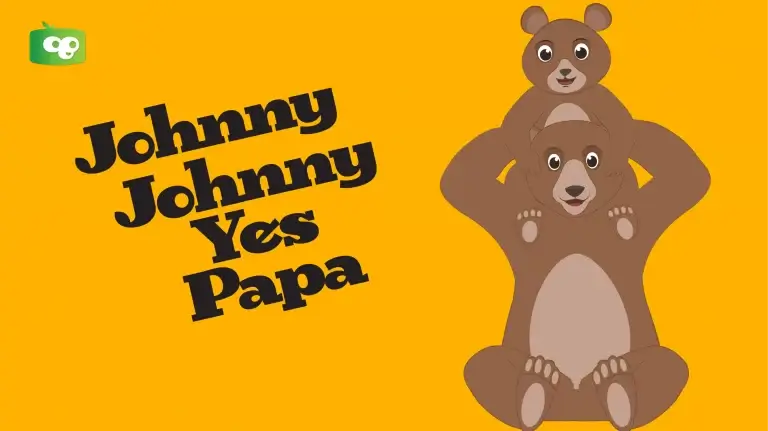

The jolly tune of Johnny Johnny is thought to have originated in India sometime in the 20th century. It is written as a “call and response” rhyme, where two characters are talking to each other. In this video, we see a father bear and his young cub. It’s one of the most interesting educational app for kids because it help your child to understand dialog and conversations.
Johnny Johnny Yes Papa is the most popular nursery rhyme on the internet. It is a nonsensical rhyme that has been an instant hit with children worldwide.
This song’s exact origins are unknown, but it is believed to have originated in Kenya sometime in the early 1980s. It was first heard by English speakers when it appeared on a YouTube video called “Nursery Rhymes for Children.” Ever since there has been no stopping this catchy little ditty; its popularity only continues to grow.
Many versions of Johnny Johnny Yes Papa are available on YouTube, making it one of the most easily accessible nurseries rhymes for kids today. There are also several different cover versions of this song, with adults and children performing the catchy tune. So whether you want to learn the words or watch someone else sing it, Johnny Johnny Yes Papa is readily available for your enjoyment!
The lyrics are silly and nonsensical, but kids love them all. The song tells the story of a child named “Johnny” who refuses to eat his food. His father repeatedly asks him if he wants to eat, and Johnny replies in the negative each time. However, when his father puts some food into his mouth by force, Johnny ends up eating everything on his plate!
This humorous take on meal times is one of the main reasons why people love this silly little rhyme. And with the catchy tune and silly words, it is no surprise that this song has become so popular among kids.
Johny, Johny,
Yes papa?
Eating sugar?
No papa.
Telling lies?
No papa.
Open your mouth
Ha ha ha!
“Johnny Johnny Yes Papa” is a popular nursery rhyme that has been around for decades. The song is believed to have originated in Kenya, and it was first printed in 1980. The song’s lyrics are simple and repetitive, making it easy for young children to learn.
The song is about a young boy named Johnny who was caught stealing sugar. His father scolds him and makes him promise not to do it again.
Despite the disciplinary nature of the song, “Johnny Johnny Yes Papa” is generally seen as a light-hearted and playful nursery rhyme. Today, the song remains popular with children and adults alike and continues to be passed down from generation to generation.
The nursery rhyme/song has some controversy surrounding the interpretation and meaning.
Some believe the song teaches kids that it is funny to lie to your parents. They say that the line “Ha Ha Ha” when Johnny is caught lying sends a message that lying is okay.
However, other people believe that the song can be interpreted differently and that it is up to the parents to teach their children that lying is wrong.
Regardless of the interpretation of the song, it is essential for parents to talk to their children about the importance of honesty and why lying is not okay.
Some believe it is an introduction to deception as an alternate response to parents. In other words, the song teaches children that they can get away with bad behavior by lying to their parents. However, it is essential to note that this interpretation of the song is not universally accepted, and there are other possible meanings. Ultimately, the true meaning of “Johnny Johnny Yes Papa” remains a mystery.
The fun rhyme of Johnny Johnny provides various social and emotional benefits for young children, which will help them develop friendships and maturity.




